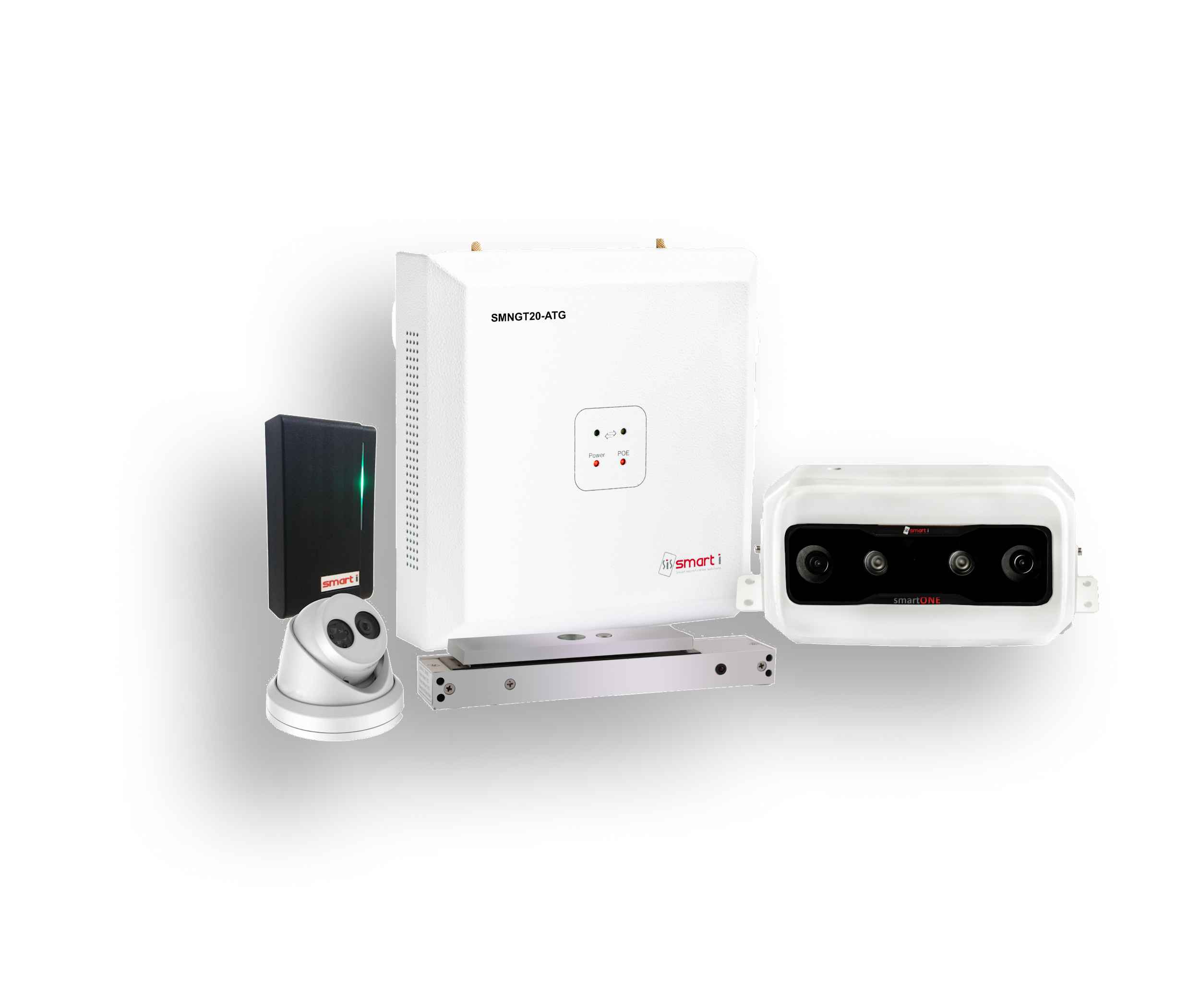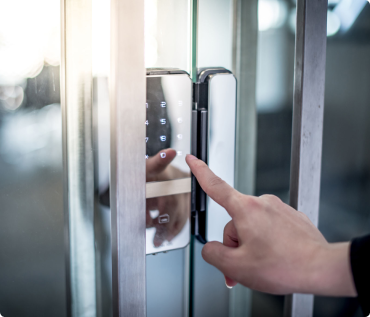Tailgating can be defined as a physical security breach in which an unauthorized person enters a secured location after an authorized person.
Tailgating is a simple social engineering-based method of
circumventing numerous security features that one would consider secure. For
example, even retina scanners are useless if an employee keeps the door open
for an unknown individual behind them out of misguided courtesy.
Disgruntled former employees, thieves, vandals, and those
with issues with staff or the company are all possible tailgaters. Any of these
can cause business disruption, unanticipated costs, damage, and extra safety
concerns.
The problem with these loose policies is that they allow
undocumented and unauthorized admission into your building by those who may
want to harm your property and occupants.
Anti-tailgating access control ensures that only those who
are supposed to be in your building are let in — permitted users are allowed
in, while illegitimate visitors are barred.
The Conundrum
Domestic violence, theft, sabotage, and terrorism are all
risks associated with tailgating. You don't want a Timothy McVeigh checking out
your building's layout or an angry ex-employee returning to cause a ruckus.
However, not all risks are external. For example, only a
subset of your building's tenants should access certain internal regions.
Consider the following examples: a laboratory, pharmacy, operating room,
equipment room, or data center. In addition, you may wish to limit and track
who has access to sensitive papers, special equipment, or toxic chemicals.
One of the most frequent security breaches is tailgating. It
all starts innocently enough:
●
An employee unlocks a
door and holds it open for others.
●
Visitors without
badges.
●
A uniformed worker's
complacent acquiescence.
During an emergency, inaccurate headcounts can result in
inhabitants being unintentionally left behind or emergency workers seeking
people who were never on the premises.
The Solution
It would help if you used a range of tactics in addition to
the anti-tailgating system. Which method is best for you depends on the precise
entry point you wish to safeguard, the layout of the entrance, the reason for
regulating access to it, and your budget's flexibility.
Anti tailgating access control solutions are simple to
implement and work well with most security systems. Use one or more of the
following systems:
●
A duplicate set of
identification is required for man traps or airlocks.
●
Authentication with
many factors.
●
Card readers can be
programmed with PINs.
●
Employee training.
●
Employees are less
likely to share credentials due to biometrics.
●
Make sure the doors
close quickly and securely.
●
Multiple credentials
can be stored on a single smart card.
●
Multiple people can be
detected using laser sensors.
●
Parking lots and
garages can benefit from long-range readers.
●
Photosensors or laser
sensors allow only one person to enter at a time.
●
Remote facial
recognition is possible thanks to camera analytics.
●
Security guards can
visually ensure that a badge belongs to the rightful owner.
●
Turnstiles are helpful
for high-volume traffic because they act as a physical barrier.
●
Visitor badges
identify temporary visitors.
The presence of security measures might give people a false
sense of security, leading them to overlook non-technical and straightforward
ways to circumvent the protection. Tailgating, while easy, can be pretty
powerful, and the single most effective approach to prevent it is to educate
staff on how to recognize and oppose social engineering attempts.
Well, we have an effective solution for you — SmartATG!
It's an access control panel equipped with a tailgating detector. To learn more about this, head on to our website right now!
Create a Culture
You can put in the most modern security system on the
market, but your security measures will fail if your inhabitants aren't on
board.
It would help if you established a safe building culture. For example, consider the difference
between working in a relaxed office environment and going through airport
security: clear expectations and frequent communication shape behaviour.
The simplest method to deal with tailgating is to create a
challenge-based culture. It doesn't take a system; all it takes is educating
individuals aware of the dangers and giving them the confidence to confront
strangers.
You can also save money by focusing on the danger of
tailgating entrances.
Anti-tailgating access control isn't required at every
entrance. Common access control is more than adequate for standard control at
entry points. Anti-tailgating systems can be used to solve a specific problem
that may or may not have occurred.
Let us discuss how the utilization of anti-tailgating
systems can be improved with the help of AI.
What are the benefits of AI-based anti-tailgating systems?
●
Better safety
●
Enhanced security
●
Increased visibility
●
Prevention of theft
Security is probably the most desired attribute in many
establishments around the world. Unauthorized individuals would be able to gain
access to confidential information if there was no security. As a result, many
businesses hire a third-party security firm to improve the level of protection
in their area. They may deploy AI anti-tailgate technologies, in particular, to
prevent other persons from entering an otherwise secure site.
While there are various ways to avoid tailgating incidents
from occurring, the necessity of hiring a third-party anti-tailgating vendor
cannot be overstated.
Let’s continue exploring more about the advantages of
AI-based anti-tailgating access control.
Better Safety
AI-based tailgating systems secure extremely private
information and improve the safety of an establishment's staff and employees.
In addition, these systems are preventative and interceptive in that they are
designed to swiftly convey information to users so that they can respond to a security breach.
For example, robust security in a bank would help the
establishment avoid being robbed and threatened with firearms by armed bandits.
But unfortunately, in movies and real life, this is a prevalent scenario.
Of course, this isn't to argue that machines are the be-all and end-all when it comes to averting deaths or injuries to others. However, this means that they can assist in preserving and protecting life. Therefore, the best piece of advice is to use AI anti-tailgating technologies in conjunction with the most acceptable physical security methods.
Enhanced Security
The turnstile is perhaps one of the most prevalent physical
anti-tailgating systems seen in most establishments. The fundamental concept is
that only anyone with the proper credentials can pass past these obstacles,
depending on how the turnstile works. Fingerprint turnstile technology, for
example, might be used in office buildings.
Only individuals who have been registered in the system will
be allowed to use the facility in this manner. While fingerprint scanning is
not a new occurrence, it may be combined with powerful AI technologies to
improve the security impacts. This improved security feature can be used in
conjunction with other security measures, such as installing CCTV cameras or electronic
locks. This is to prevent illegal individuals from entering the building again.
Anti-tailgating technologies that are more advanced may not always need to be employed in conjunction with other high-tech devices. They could also be used in conjunction with more traditional security measures, such as the presence of a security officer who can keep an eye on and monitor the surrounding area.
Increased Visibility
The issue with poorly designed and implemented security
systems is that they fall short of boosting security breach visibility.
Establishments that rely solely on obsolete sensors and alarm systems, for
example, would be oblivious that these sensors could fail at any time. Thanks
to poor upkeep and security inspections, the building is practically a tragedy
waiting to happen.
Users will have easier access to regions where AI security
components are located using AI-based anti-tailgating. Advanced cameras,
sensors, and trigger alarms could be used. Thanks to a robust and relatively
intuitive interface, they would be notified as soon as the breach occurred,
allowing them to catch the perpetrator in the act.
Users will be able to readily identify the culprit due to the improved visibility, allowing them to report the crime to the appropriate authorities. Direct and prompt action can make all the difference in preventing highly unfavourable results regarding security.
Prevention of Theft
Unauthorized individuals who can exploit a poorly
constructed anti-tailgating system may cause more security breaches and may
also be given the opportunity to steal confidential information. This type of
circumstance is terrible for the company's security and financial results, but
it also puts employees' personal information at risk of being accessed
unlawfully.
As a result, another advantage of using AI-based solutions
to combat tailgating is that it reduces the risk of additional theft. However,
as previously stated, anti-tailgating security methods should be utilized in
conjunction with other best security practices. For example, consider the
case of a non-employee who has secured direct access to a building. A robust
AI-based security system would be able to prevent him from accessing places
with sensitive data in the future.
These places may use facial recognition technology to
identify the perpetrator. A series of rapid processes are designed to notify
the building's security management of the breach. The visitor would not only be
physically stopped from entering the room, but the added AI-security mechanism
would also prevent them from digitally approaching the area.
Key Takeaways
Establishments have been able to protect sensitive data and
the lives of their staff thanks to AI anti-tailgate technologies. Alarms,
sensors, facial recognition technologies, and other similar systems are
examples of these systems. However, no one can deny that they all had the same
goal: to prevent significant and minor security breaches.
We hope that now you have ample information to understand some
of the benefits and better utilize anti-tailgating solutions.





